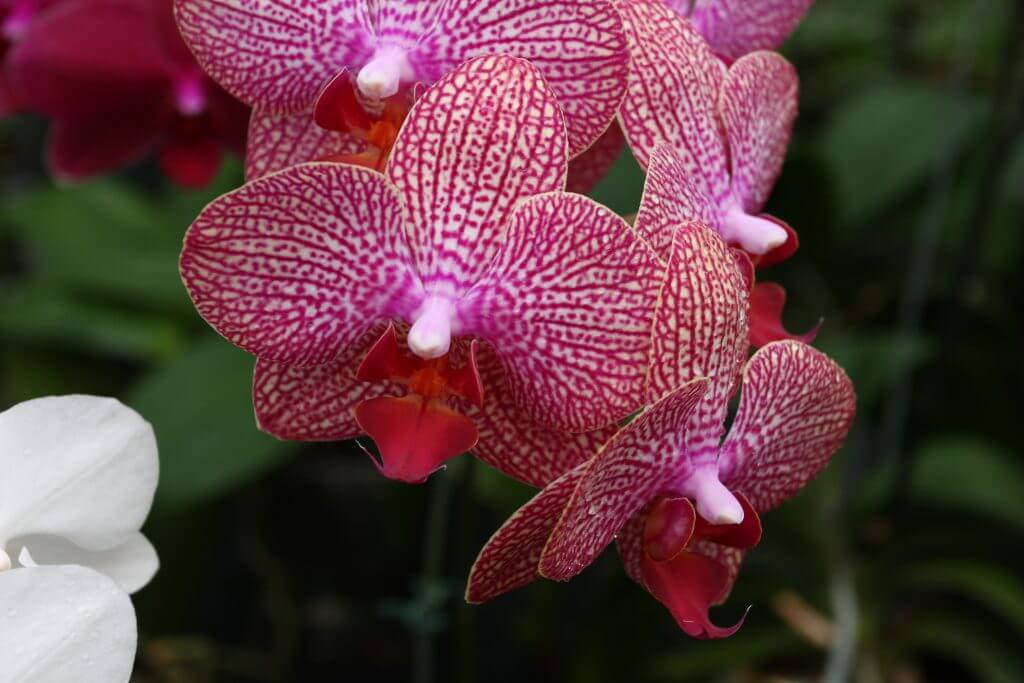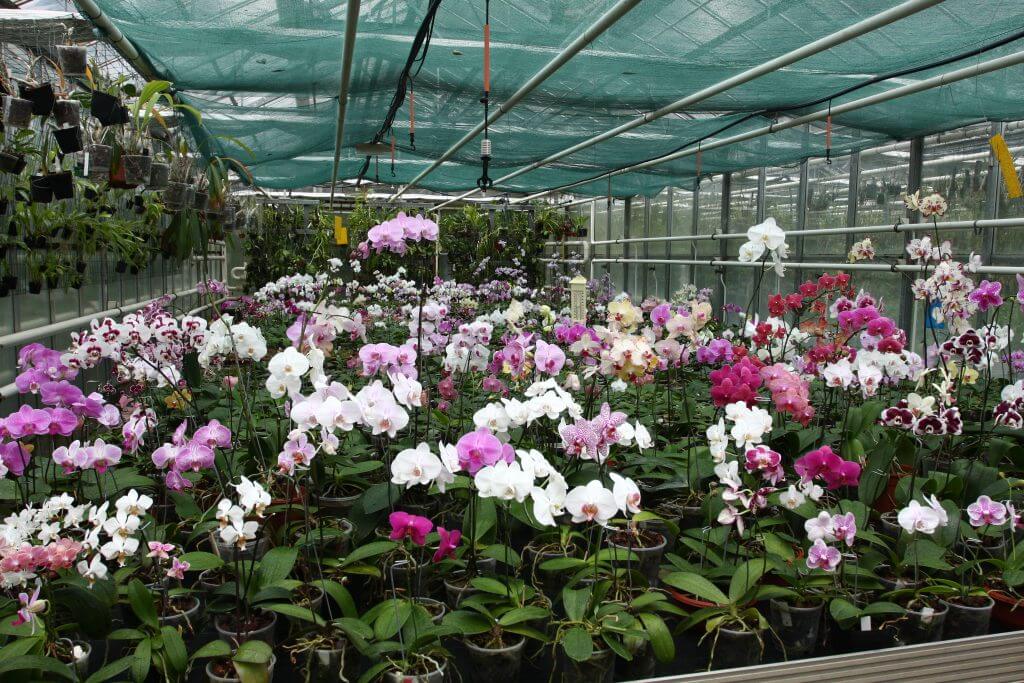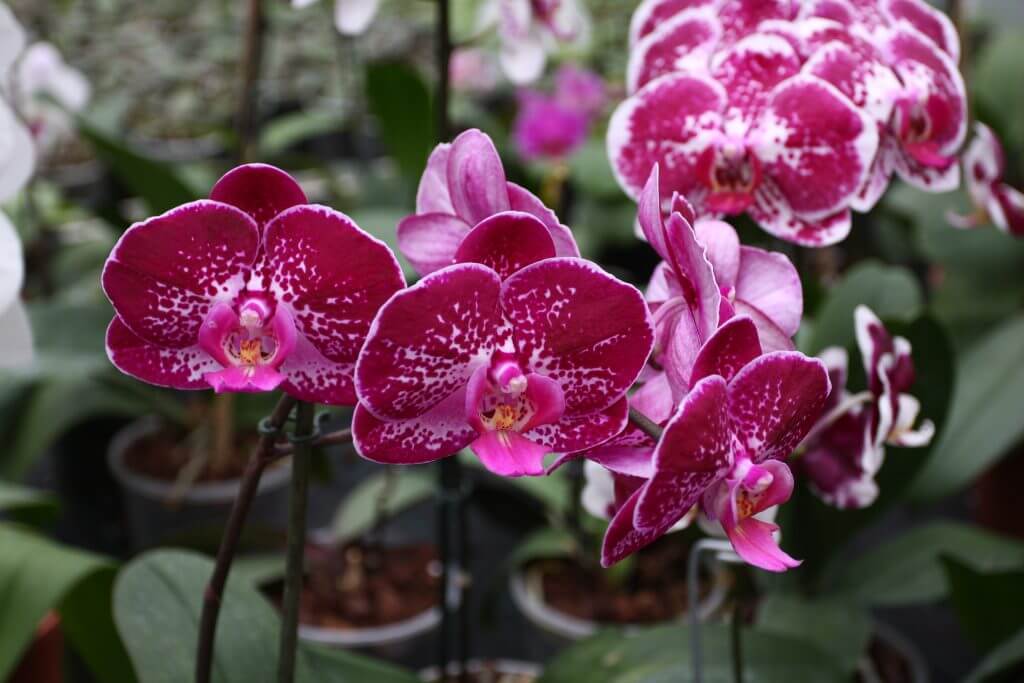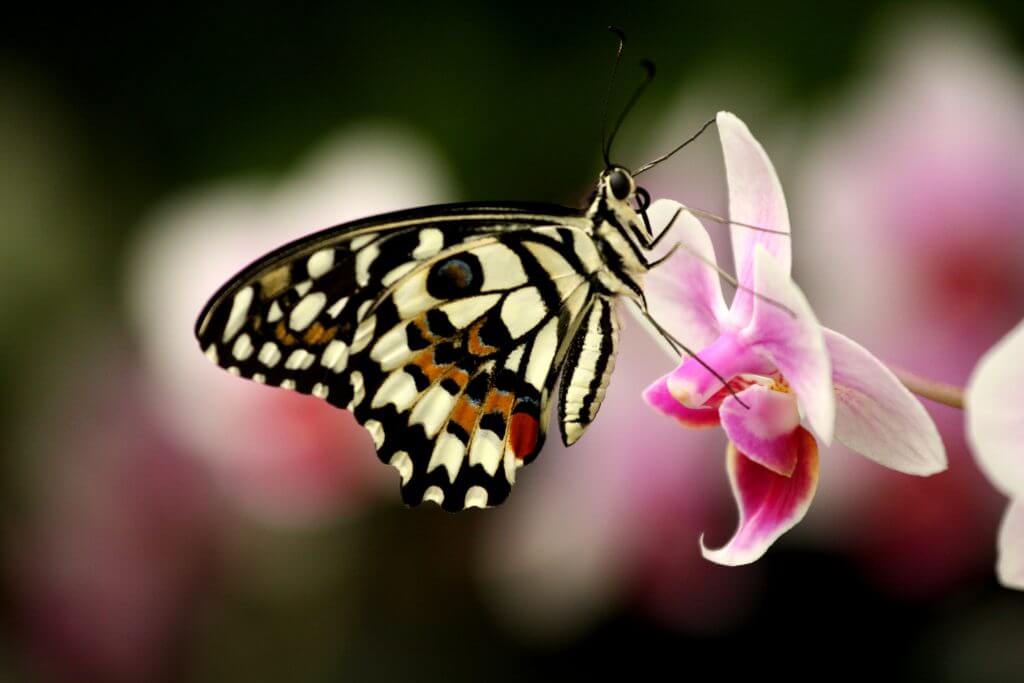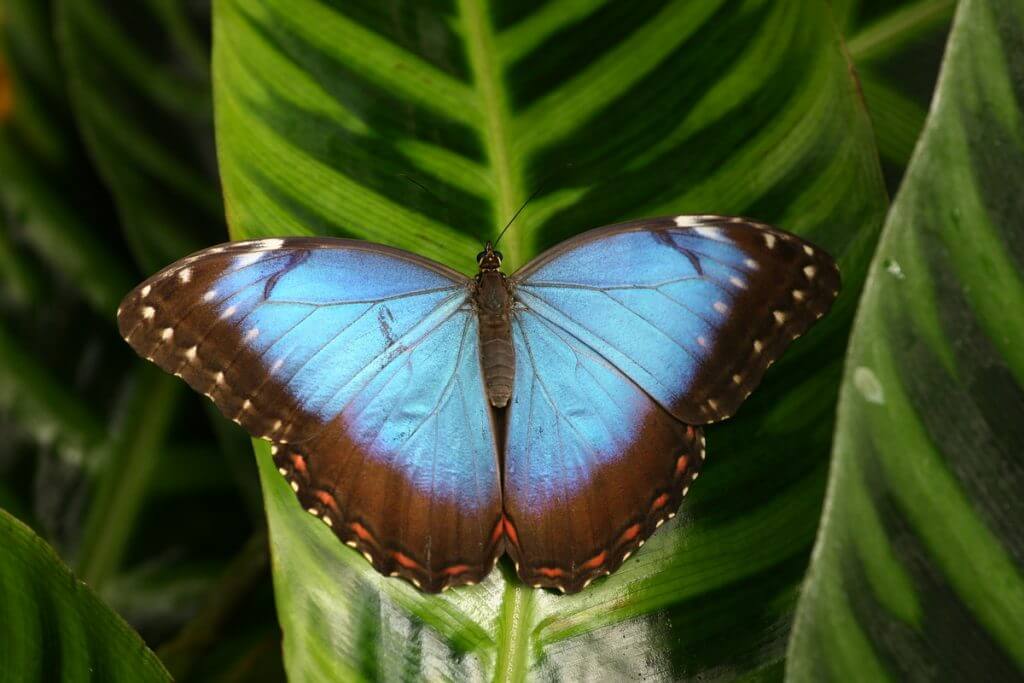When to come to us
We hold a big orchid exhibition only about once every five years, the last time it was in 2017. We hold it at the end of winter, at a time when it is usually still cold outside and the colorful beauty of exotic flowers can put a person’s sould in a happier mood. The exhibition is always complemented by interesting technical elements and live exhibits.
In the years when we do not open a large exhibition of orchids in early spring, you can see these beautiful plants as part of regular smaller events called Blooming Orchids, the dates of which you can find it is in the calendar of events. Thanks to them, you can look at orchid greenhouses every year, even in autumn, when large-flowering orchids of the genus Cattleya and their hybrids bloom.
What you will see
There are approximately 30 000 species of orchids in the world, which is the population of the district town, and is one of the largest plant families in the plant kingdom. It goes without saying that within such a large number, the individual species differ in terms of shapes, colors and, of course, the requirements for cultivation.
V našich sklenících se nachází téměř 2 000 přírodních druhů a kolem 3 500 kříženců vytvořených člověkem a tato sbírka se řadí mezi největší v Evropě. Tato sbírka orchidejí je (stejně jako každý obor zahradnictví) výsledkem mnoha desetiletí silného vztahu k oboru, odborných znalostí, předávání zkušeností, hledání a každodenní práce. Naše skleníky, laboratoř a odborní zaměstnanci jsou známi (nejen mezi evropskými) pěstiteli orchidejí, orchidejovými kluby i mezi jednotlivými sběrateli a nadšenci.
Our greenhouses contain almost 2000 natural species and around 3500 man-made hybrids, and this collection is one of the largest in Europe. This collection of orchids is (like every field of horticulture) the result of many decades of strong relationship to the field, expertise, transfer of experience, search and daily work. Our greenhouses, laboratory and professional staff are known (not only among European) orchid growers, orchid clubs, but also among individual collectors and enthusiasts.
Tilandsia
In addition to orchids, you can also find a collection of tilandsias in our greenhouses, which numbers 200 species. Like orchids, they belong to the world’s protected plants. They are often grown with orchids due to their exoticism and similar demands.
Interesting information
For the sake of interest, let us also mention that orchids include vanilla, which everyone know well. Its flowers are not as conspicuous as other species. Vanilla essential oil has its place in exclusive perfumes, it is a sweet-smelling liquid of higher density and dark color.
The rarity of orchids is a relative term created by humans. Rare for someone means financially expensive, but it can also mean hard to reach, hard to grow, something we a have a strong emotional connection to or something is not enough. Therefore, there is no such thing as a rare plant.
What makes our collection (as well as whole garden) exceptional is its integrity, diversity, continuity for decades, expertise, technological sophistication, years of friendly contacts and, last but not least, employees who love their work and do everything for it is in their power.
Hatching of butterflies
Where the butterflies come from
Our butterflies come from Stratford, England, where we have taken pupae from the beginning of our butterfly exhibitions.
The pupae of butterflies come in a polystyrene box lined with cotton wool. They must first be cleaned of cotton wool so it does not prevent the butterflies from hatching. Then there is the patient several-hours work with glueing to the wooden slats. It was not easy to choose suitable instant glue, on the qualities of which the success of this work depends. Fortunately, we have already resolved this issue once. At the very beginning, however, the preparation of the technological background is demanding. The greenhouse must be completely netted so that the butterflies do not fly away or get cool on the cold and wet glass. This work takes several days and must be worked carefully because butterflies are resourceful.
Hatching conditions
The pupae need 27-30 °C and humidity above 75 ° to hatch. It the hatchery, this is ensured by the bottom heating and the dew sensor, thanks to which the misting nozzles switch on automatically. (Amet’s products make it possible, among other things, to monitor the suitable time for the application of chemical preparations in Czech orchards, the consumption of which is thus the second lowest in European countries for our fruit).
Butterflies usually hatch for 3 – 7 days and do so especially in the morning, where it is probably the most suitable time in nature – the highest humidity and lower temperature. The butterfly gets our in a few seconds and then has to pump the hemolymph into the crumpled wings. If he dried up, he wouldn’t sraighten his wings. It hangs for a while until the wings gain the necessary strength.
Feeding
If all goes well, it’s time to open the door and release the butterflies to the greenhouse. Here begins another worry – what to eat. The species that you can eat in our country are divided into two groups according to their food intake.
The first feed on rotten fruit (bananas, oranges, pineapples etc.). They mostly search for food by smell. In addition to fruit, we give them, according to the advice of the entomologist of our university, prof. Laštůvka, a solution of baby food and yeast that butterflies really enjoy. We have the bowls marked in blue.
The second group of butterflies need nectar from plants for their life. It has either flowering plants (Kalanchoe, Lantana, Pentas lanceolata), or a solution of simple fruit sugar (fructose) in bowls with a red mark. Visually oriented butterflies see red best. (In the case of sucrose, it is stated in the literature that in the heat and in the absence of water, it can recrystallize in butterfly bodies in the heat and in the absence of water, thus shortening their life).
Tropical species of butterflies
Butterflies are very sensitive to chemicals. In the greehouse, chemical protection must be stopped a month before their breeding. We use distilled water for feed preparation.
There are about 20 species of (tropical) butterflies in the order, most of which you can then observe in the greenhouse. The lifespan of these species is in nature and in the greehouse from one to two weeks.
